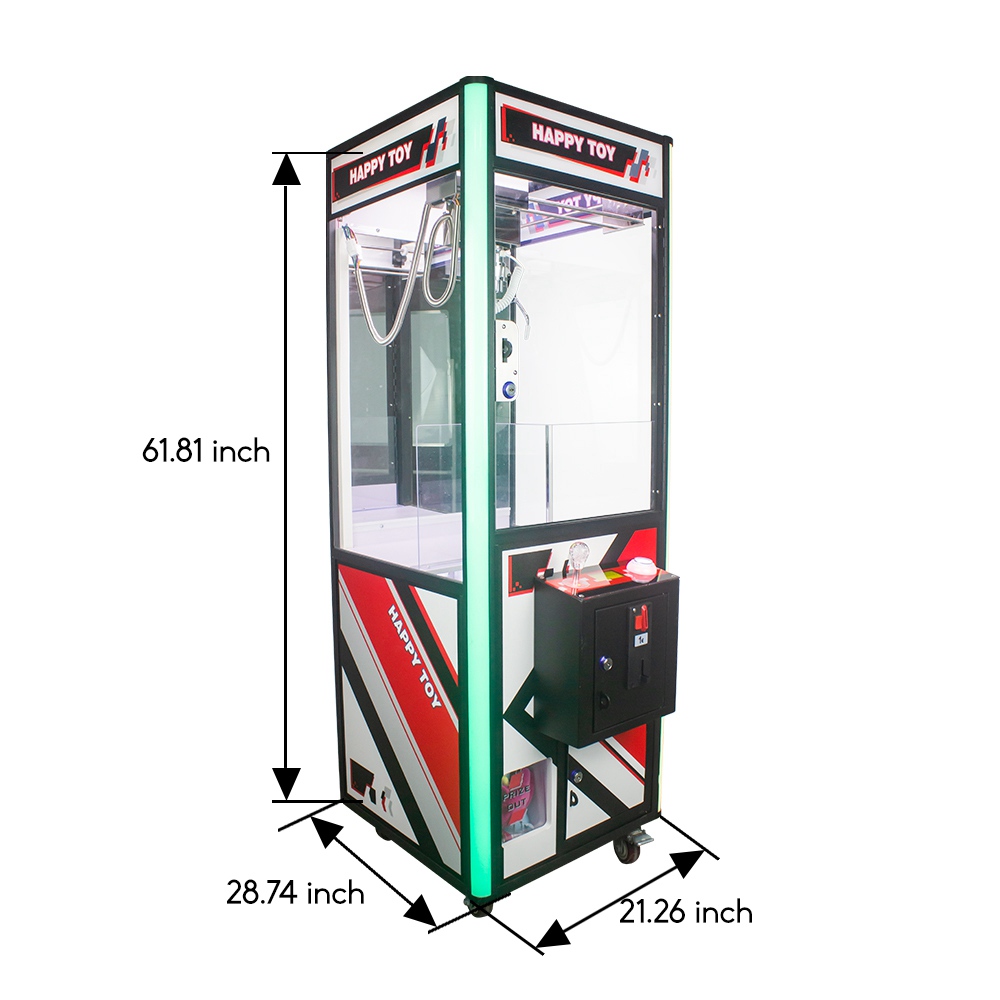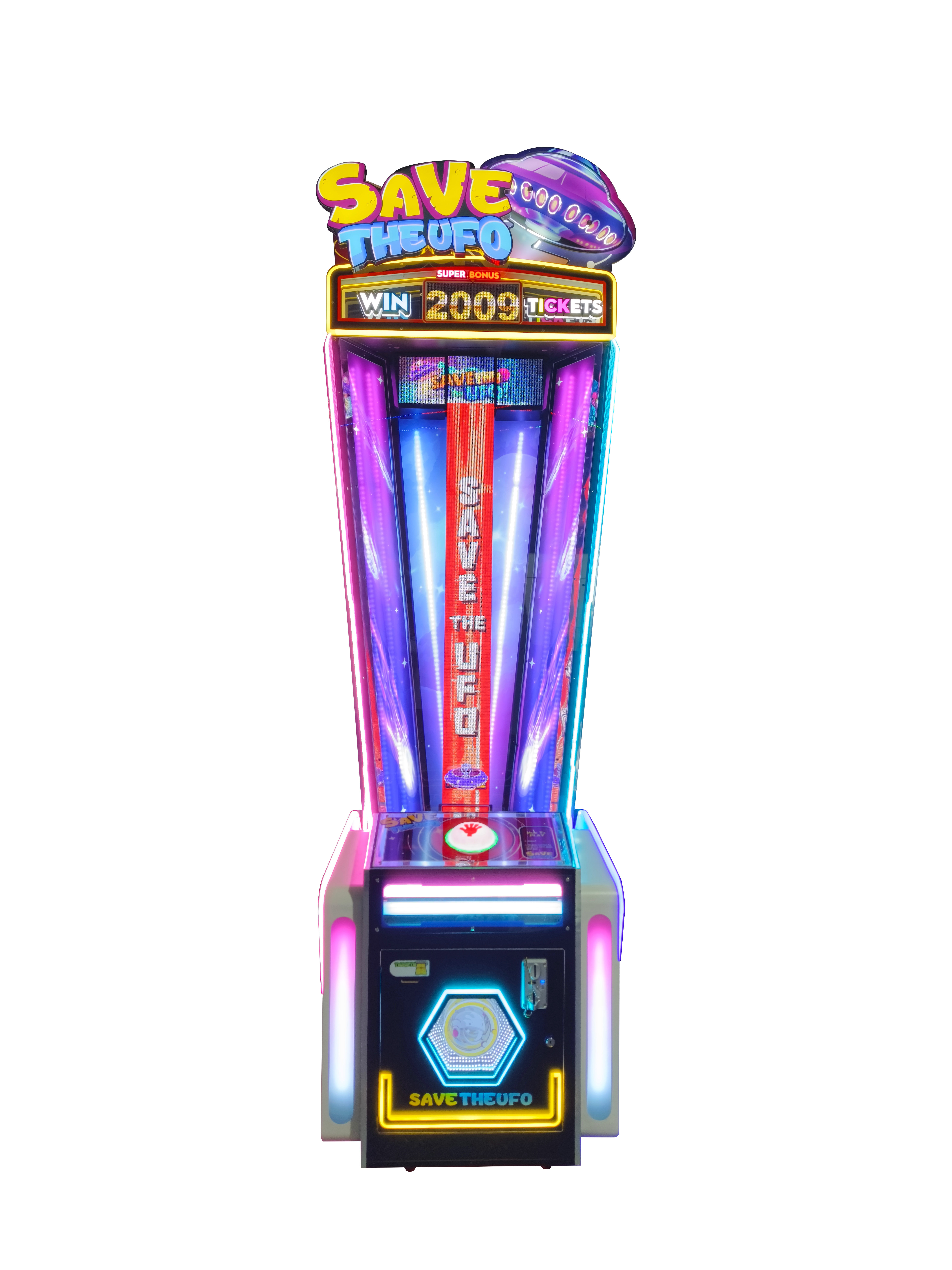Machine prices range from $500 to $2,500, with features like adjustable claw strength and payout settings. Popular in arcades, malls, and events, these machines generate $200 to $1,000 monthly in high-traffic areas. To win, players focus on positioning the claw over loosely packed items and timing their grabs carefully. Operators stock the machines with desirable prizes, which can be restocked after around 100-200 plays. Routine maintenance, such as adjusting settings and cleaning, ensures smooth operation and player satisfaction.
Table of Contents
ToggleThe fun and challenges of claw machines
The core appeal of crane claw machines lies in their simplicity yet challenging nature. With an average success rate of 15%-30%, players can expect to win a prize 1 to 3 times out of 10 attempts. Due to this uncertainty, players often feel that “one more try will get it,” driving them to continue playing. This mechanism creates high player retention, with over 80% of players attempting at least 2 more times after their first failure. Psychological studies indicate that the satisfaction of successfully grabbing a prize significantly activates the reward system in players, making the sense of achievement from repeated effort more attractive than a simple win.
Survey data also shows that over 60% of crane machine players spend at least 5 coins per game, and 15% of players will insert more than 10 coins in pursuit of a win. This reflects the challenge and entertainment of crane machines and further proves their unique ability to engage players’ interest and investment.

How to improve the success rate of claw machines
Increasing your chances of success isn’t just luck; experienced players can boost their success rate to 40%-50%. Prize positioning is especially important, with prizes near the exit and not weighed down by other items having a much higher chance of being won. Actual data shows that over 90% of high-success-rate players choose loosely placed prizes rather than grabbing randomly.
Claw strength is another key factor. Most commercial crane machines have claw strength ranging between 30%-50%, meaning the claws may not securely grab heavier items. Therefore, grabbing lighter prizes increases success rates by 25%-35%. For instance, when claw strength is set at 50%, the success rate for prizes weighing under 100g can reach 35%, while it drops significantly to around 10% for prizes over 150g.
For players, controlling the claw’s movement with precision is crucial to winning. When a prize is less than 10 cm from the exit, the success rate of grabbing it can increase by 10%-20%. Therefore, players should try to position the claw near the exit to increase the chances of successfully retrieving the prize, even if it slips during the grab.

How claw machines become a social hotspot
Couples and groups of friends are the main users of crane claw machines. 70% of couples jointly operate the claw machine, with one person controlling the claw and the other offering strategy or advice, which not only adds to the fun but also enhances teamwork and bonding. Studies show that playing together on crane machines can significantly improve a couple’s rapport, with over 75% of couples reporting that crane machines are one of their favorite entertainment activities.
Among friends, crane claw machines also act as social catalysts. 50% of players tackle challenging prizes with friends, particularly when claw strength is insufficient, or the prize is too heavy. Friends’ help often boosts success rates. When someone successfully wins a prize, it tends to attract a crowd of onlookers, 70% of whom say that seeing others win encourages them to try as well. This type of social interaction makes crane machines an essential part of gatherings and friend outings.
Mall data shows that each crane machine attracts 50-80 players daily, especially on weekends when participation spikes. Couples and friends account for over 60% of this crowd. This high frequency of use makes crane machines a valuable tool for businesses to draw in foot traffic.








